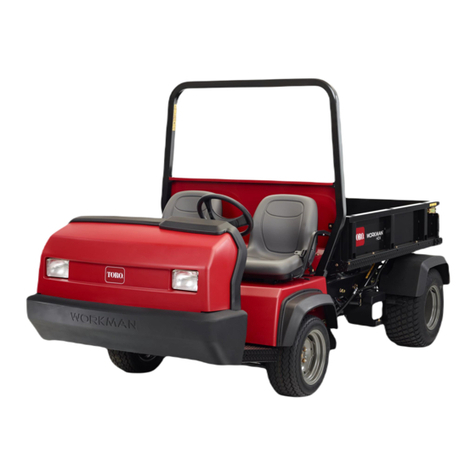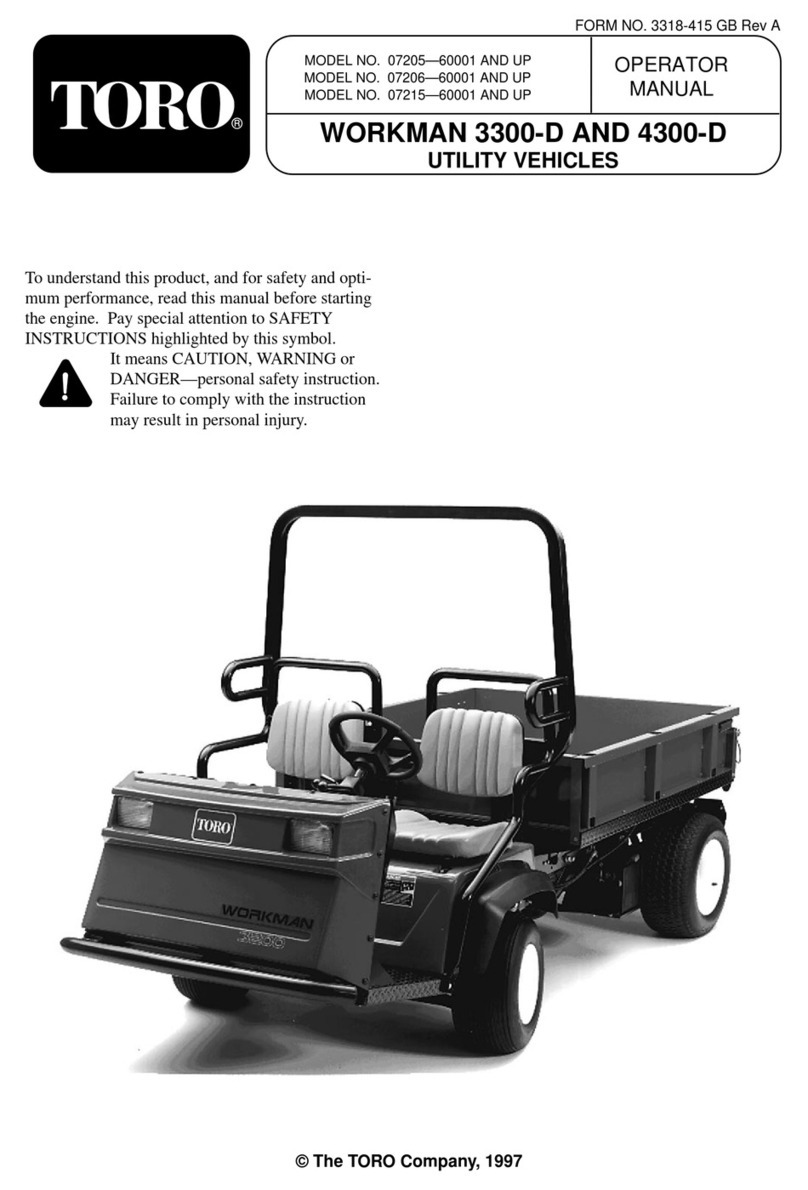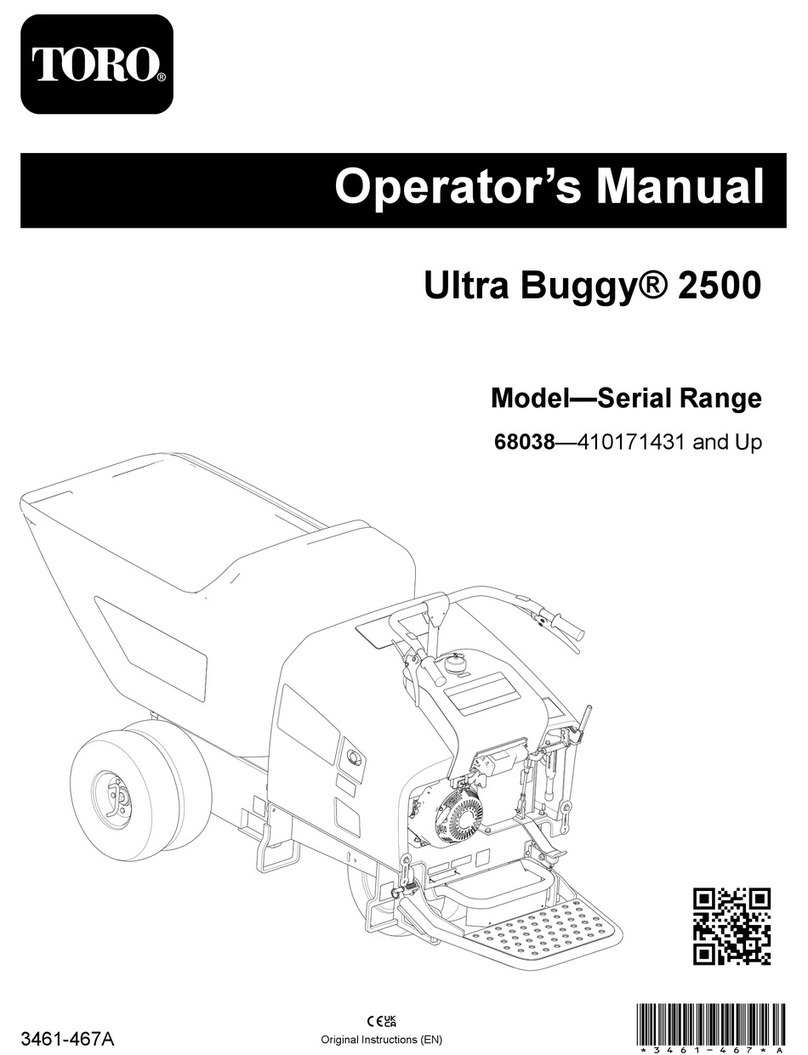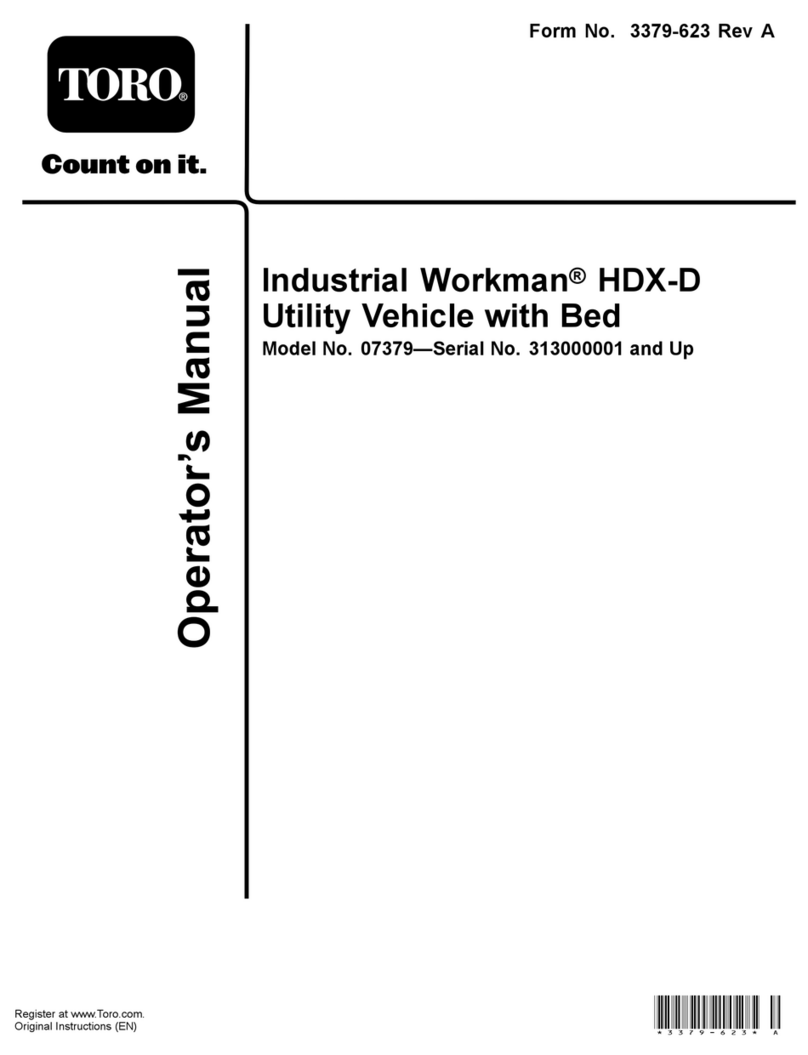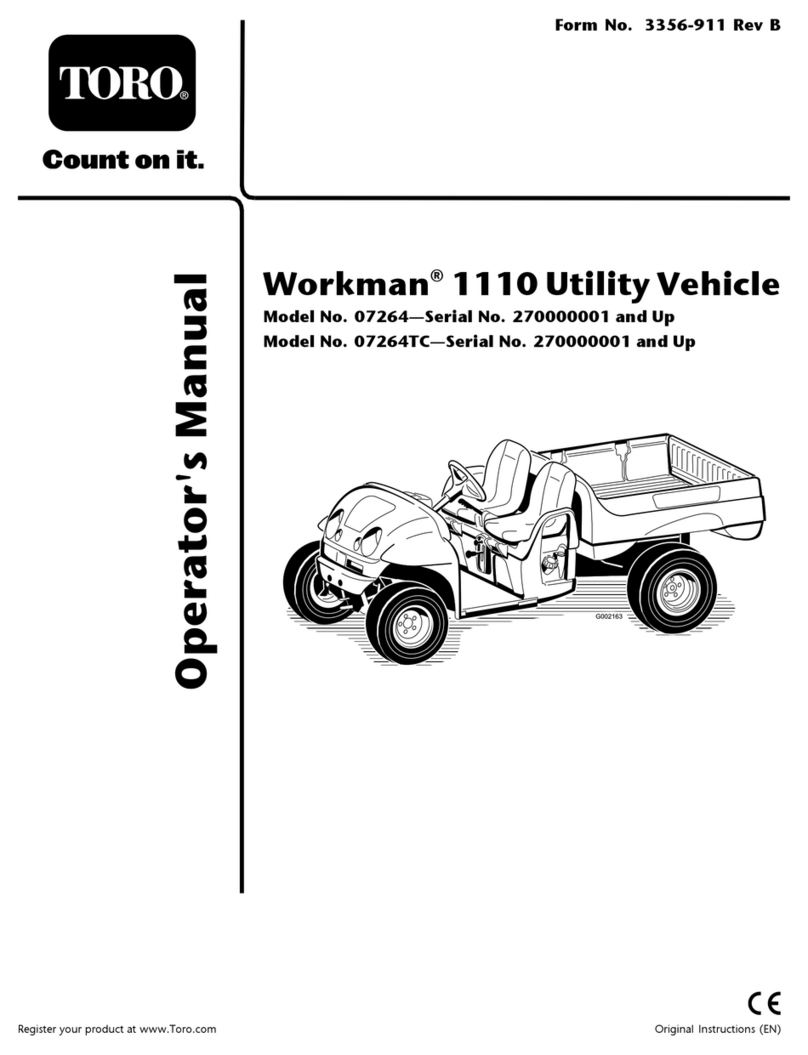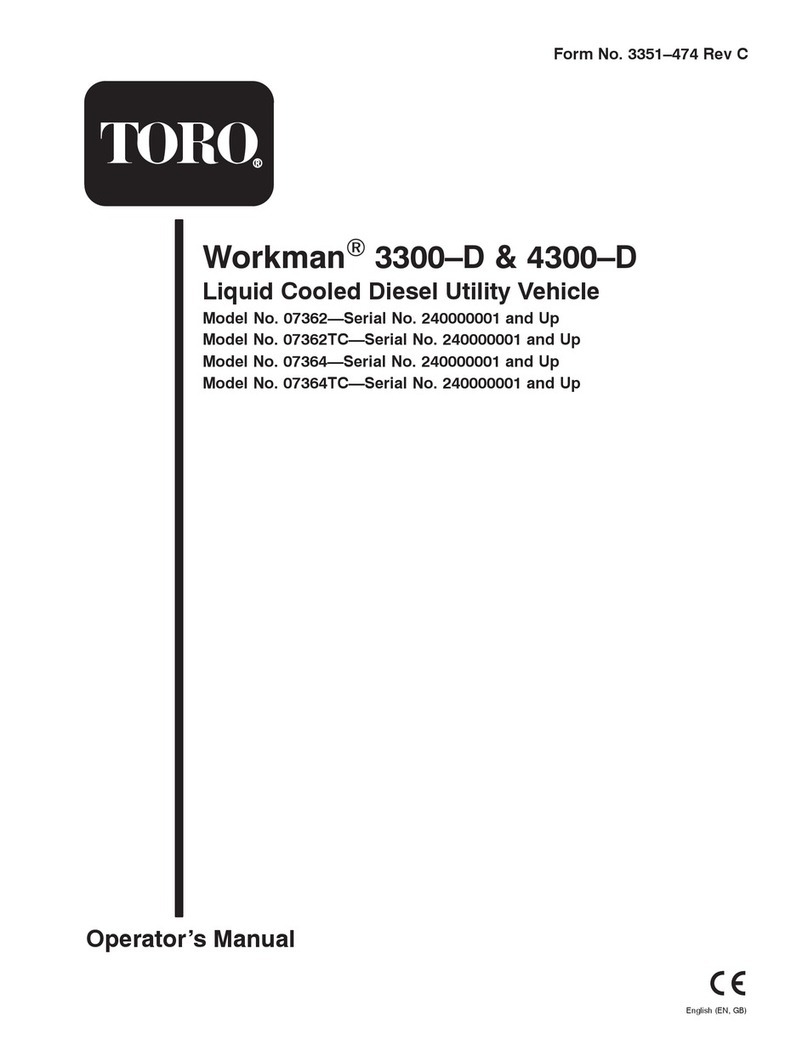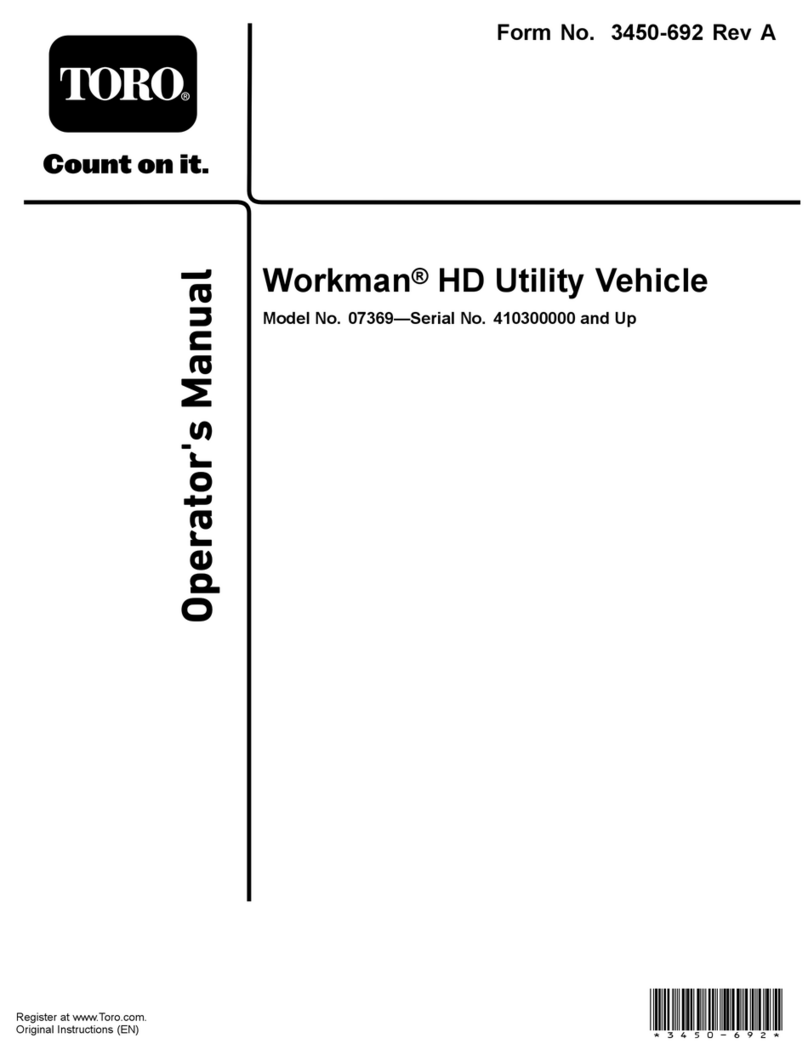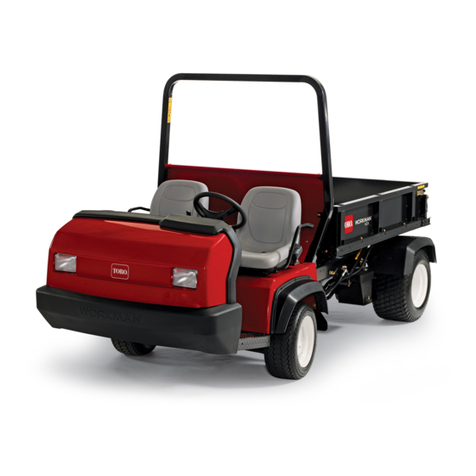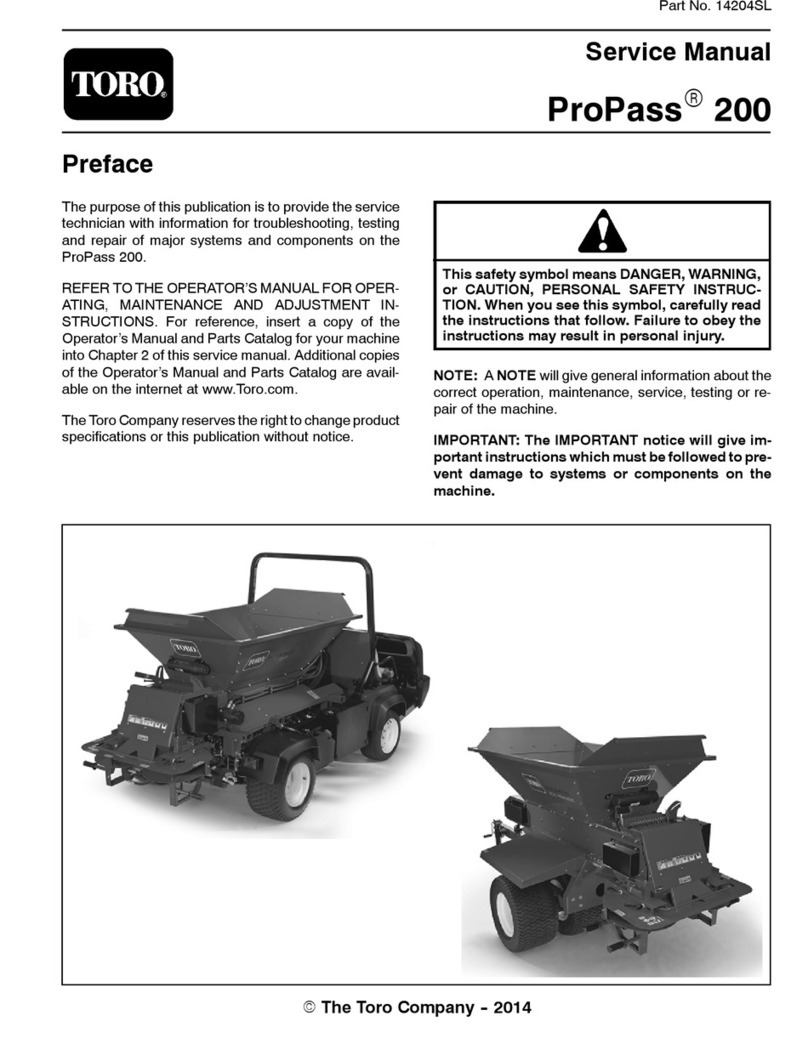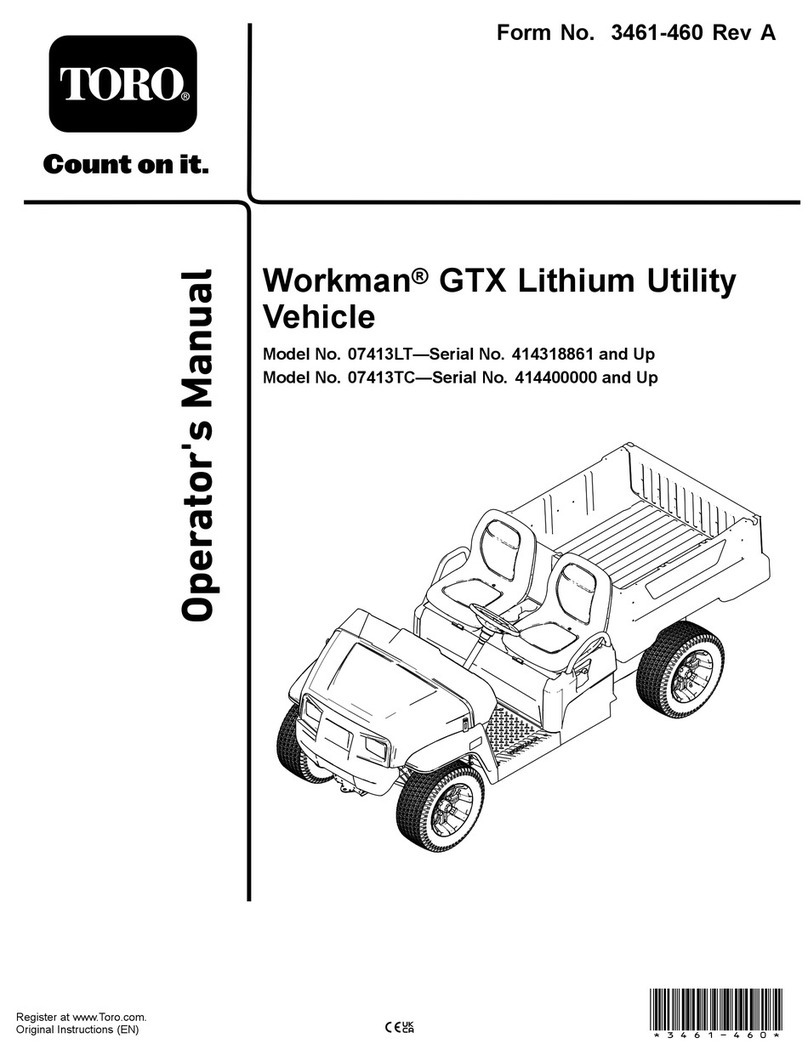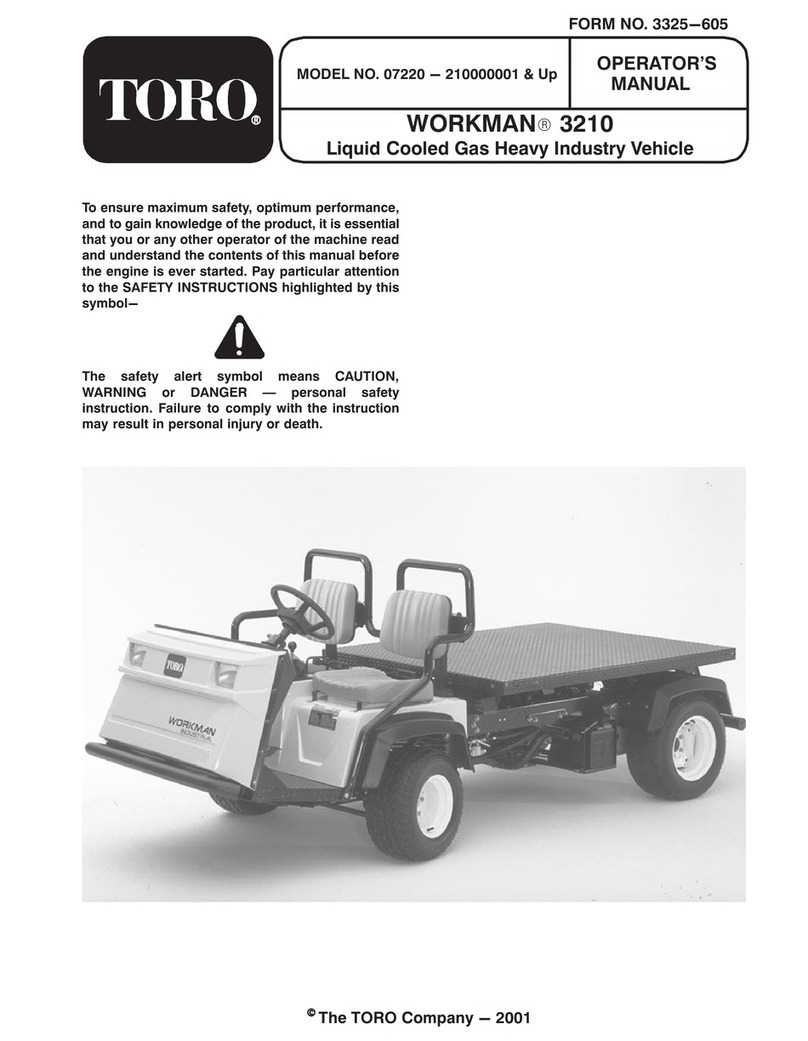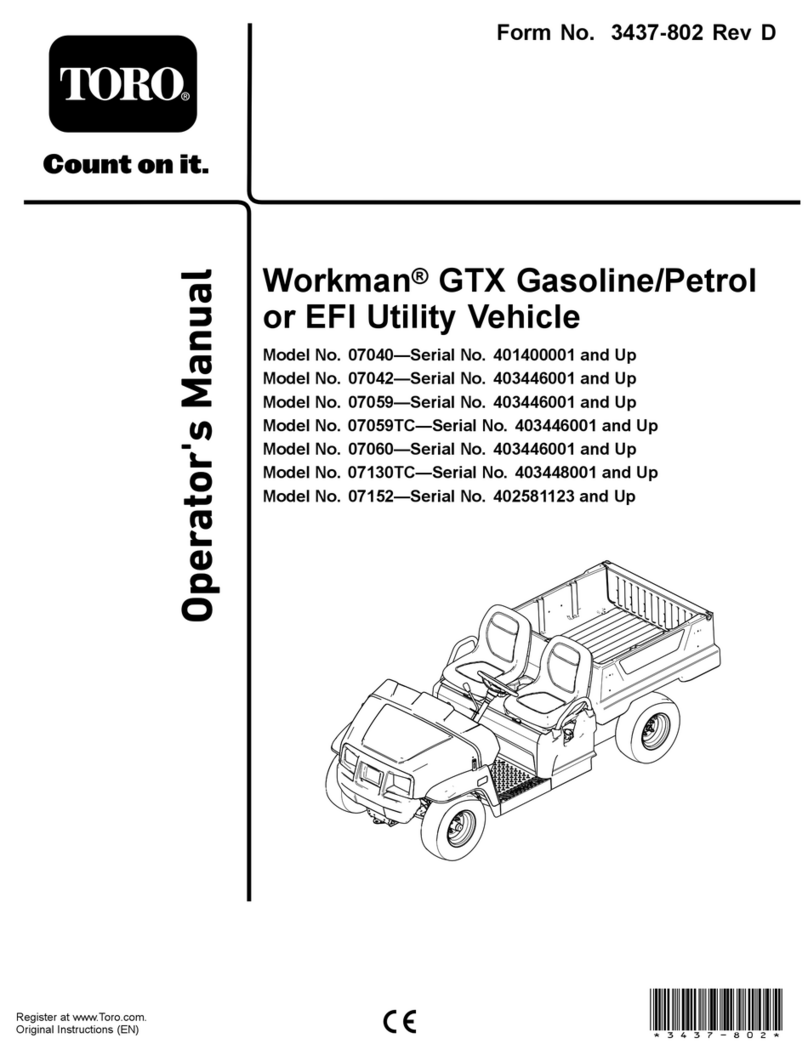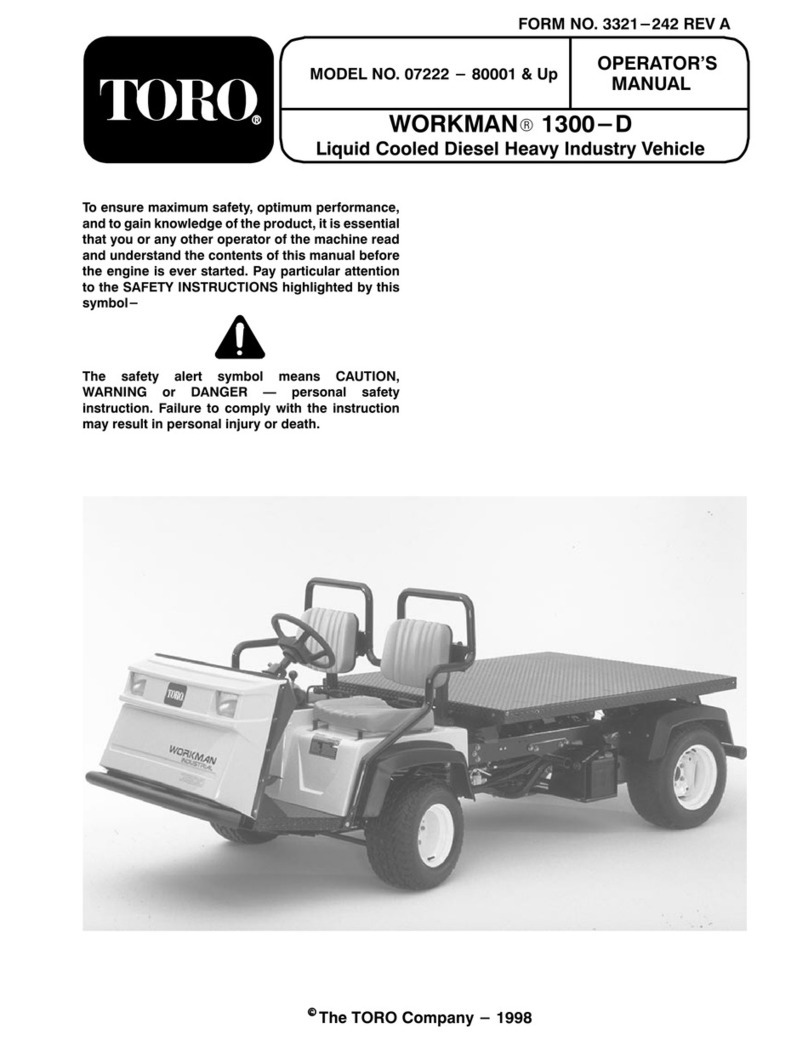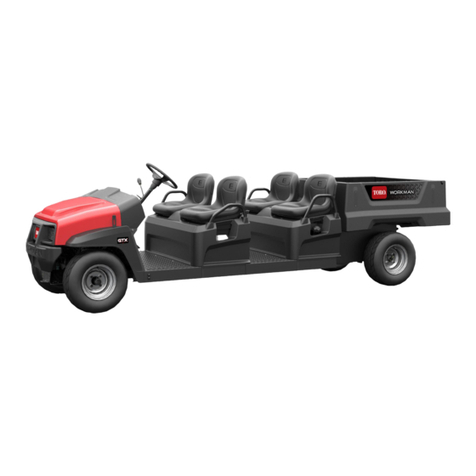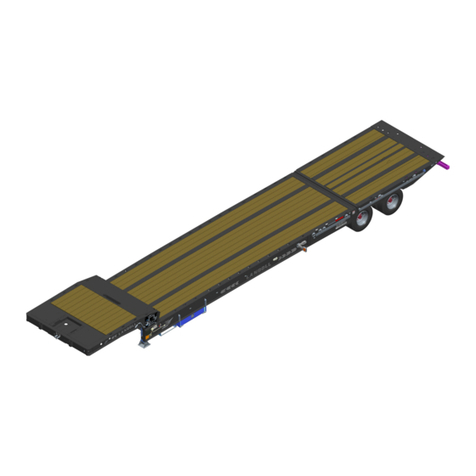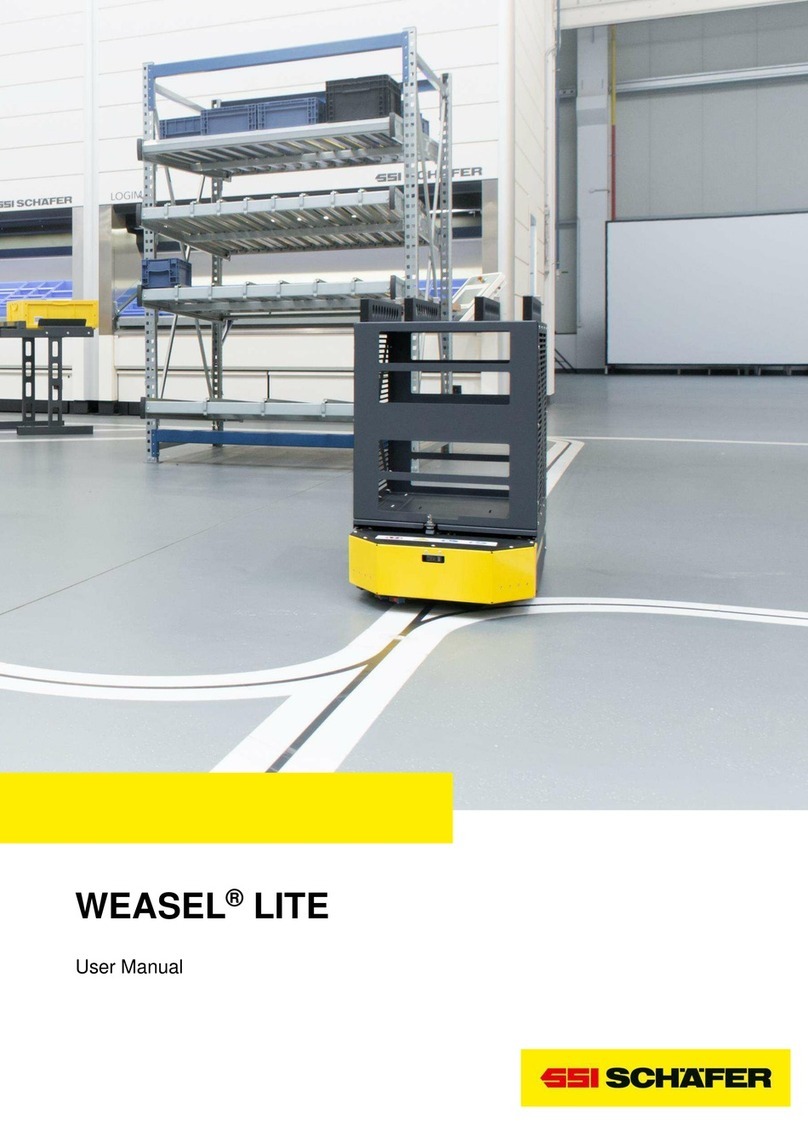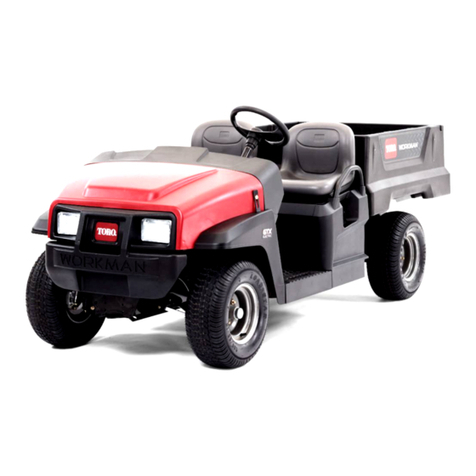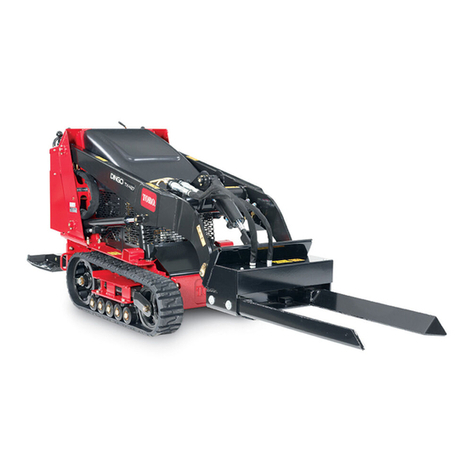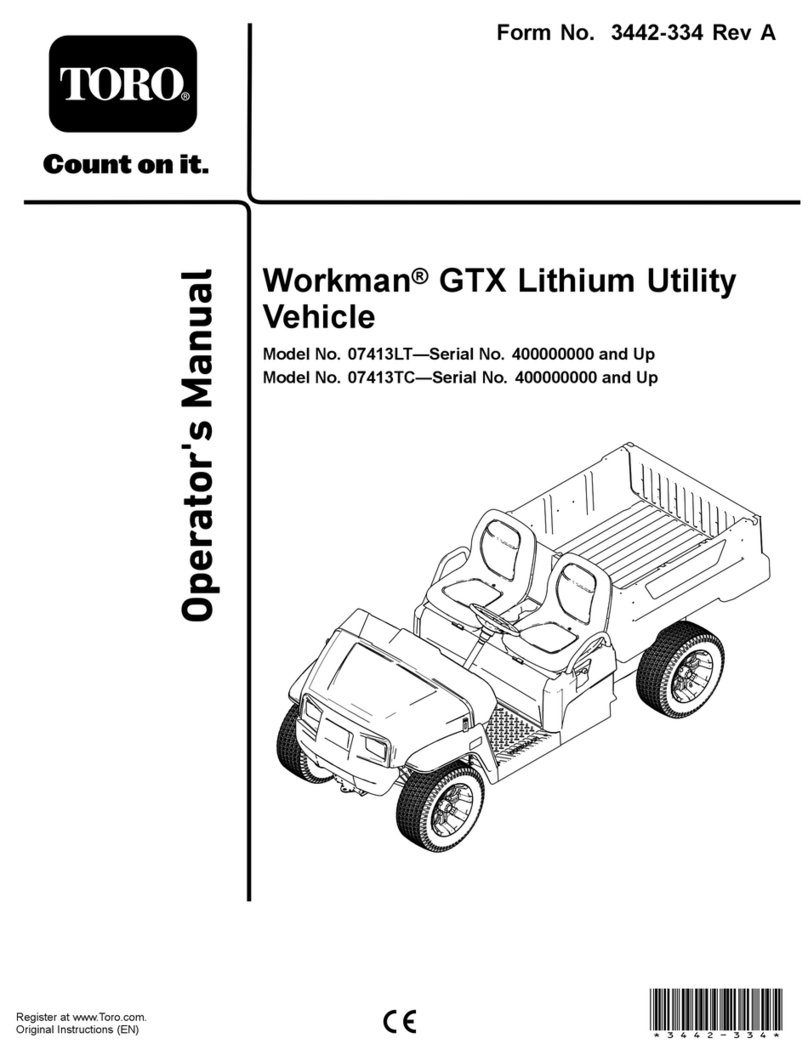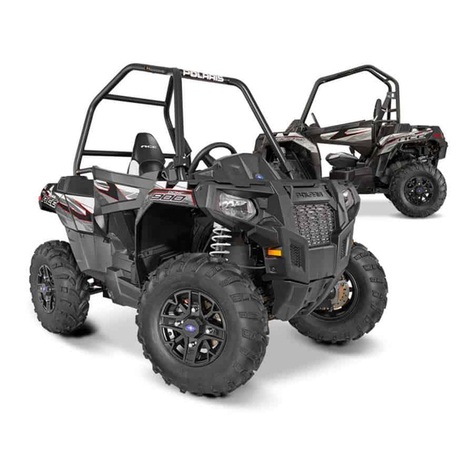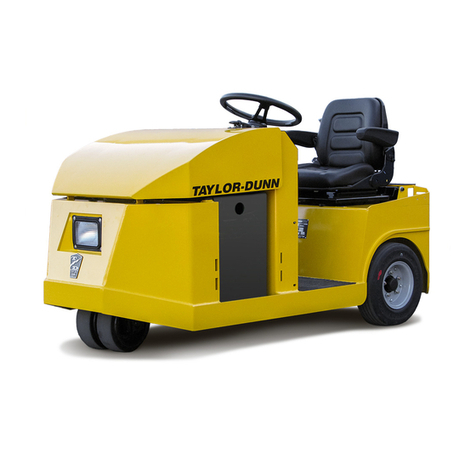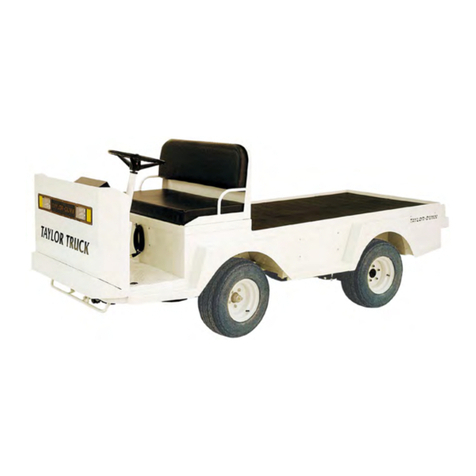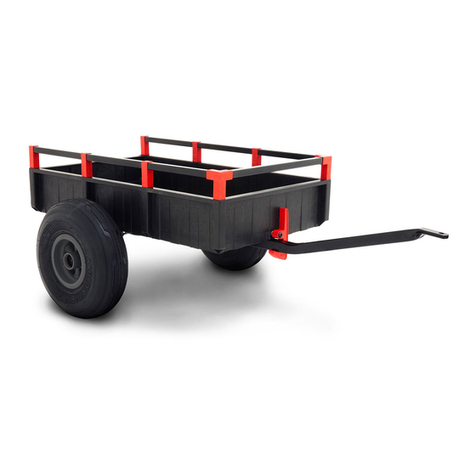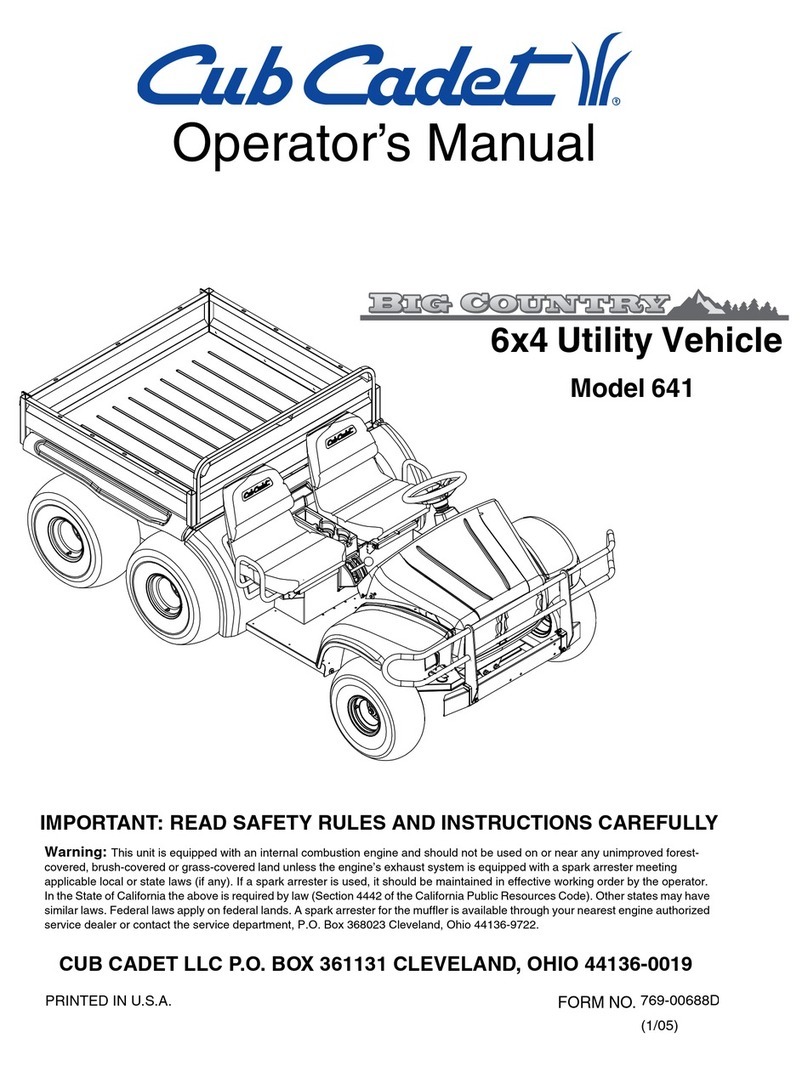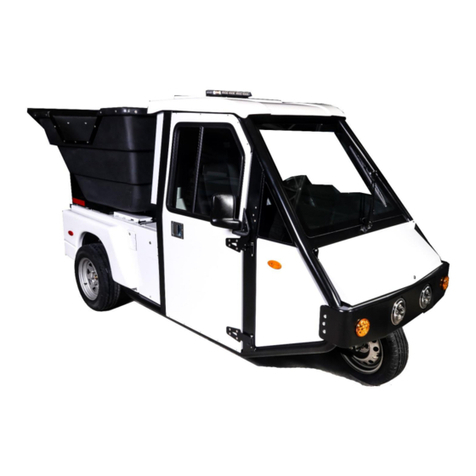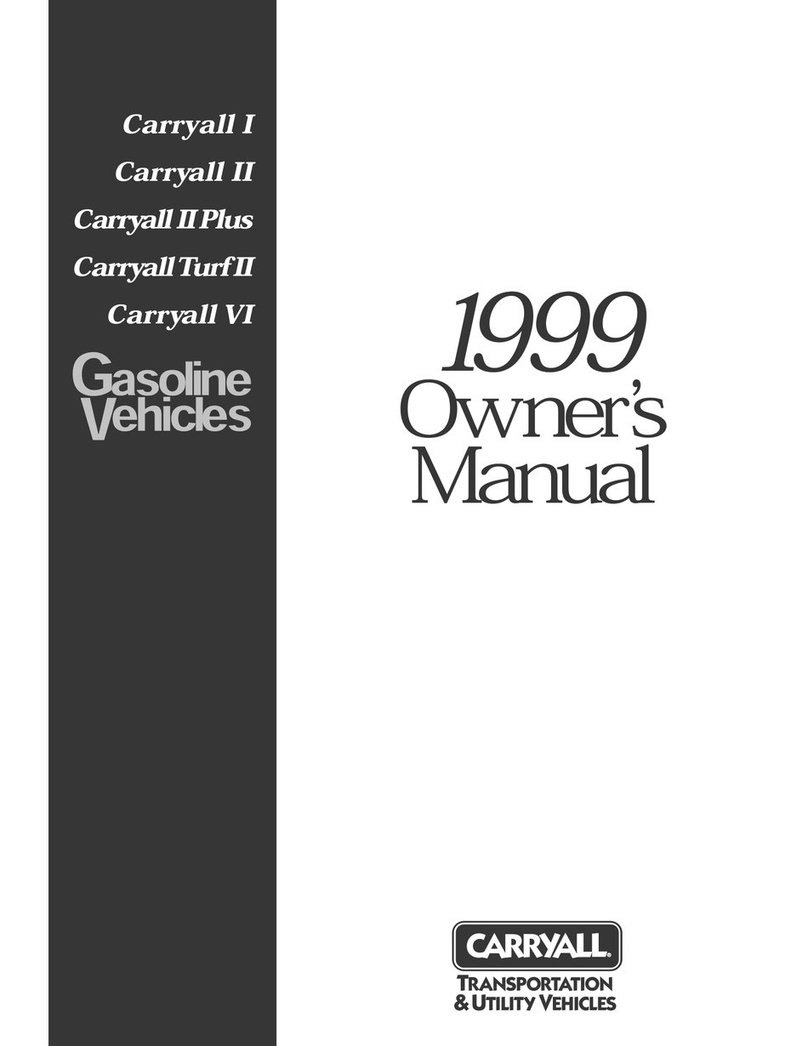
Contents
Safety . . . . . . . . . . . . . . . . . . . . . . . . . . . . . . . . . . . . . . . . . . . . . . . . . . . . . . . . . . . . . . . . . . . . . . . 5
General Safety . . . . . . . . . . . . . . . . . . . . . . . . . . . . . . . . . . . . . . . . . . . . . . . . . . . 5
Safety and Instructional Decals . . . . . . . . . . . . . . . . . . . . . . . . . . 6
Setup . . . . . . . . . . . . . . . . . . . . . . . . . . . . . . . . . . . . . . . . . . . . . . . . . . . . . . . . . . . . . . . . . . . . . . . . 9
1 Installing the Steering Wheel . . . . . . . . . . . . . . . . . . . . . . . . . . . . 9
2 Connecting the Battery . . . . . . . . . . . . . . . . . . . . . . . . . . . . . . . . . . . . 9
3 Checking the Fluid Levels and T ire
Pressure . . . . . . . . . . . . . . . . . . . . . . . . . . . . . . . . . . . . . . . . . . . . . . . . . . . . . . . 10
4 Burnishing the Brakes . . . . . . . . . . . . . . . . . . . . . . . . . . . . . . . . . . . . 10
5 Reading the Manual and V iewing the
Setup Material . . . . . . . . . . . . . . . . . . . . . . . . . . . . . . . . . . . . . . . . . . . . . . . . 1 1
Product Overview . . . . . . . . . . . . . . . . . . . . . . . . . . . . . . . . . . . . . . . . . . . . . . . . . . . 12
Controls . . . . . . . . . . . . . . . . . . . . . . . . . . . . . . . . . . . . . . . . . . . . . . . . . . . . . . . . . . . 13
Specications . . . . . . . . . . . . . . . . . . . . . . . . . . . . . . . . . . . . . . . . . . . . . . . . . . 16
Attachments/Accessories . . . . . . . . . . . . . . . . . . . . . . . . . . . . . . . . . 16
Before Operation . . . . . . . . . . . . . . . . . . . . . . . . . . . . . . . . . . . . . . . . . . . . . . . . . 17
Before Operation Safety . . . . . . . . . . . . . . . . . . . . . . . . . . . . . . . . . . . 17
Performing Daily Maintenance . . . . . . . . . . . . . . . . . . . . . . . . . . 17
Checking the T ire Pressure . . . . . . . . . . . . . . . . . . . . . . . . . . . . . . . 17
Adding Fuel . . . . . . . . . . . . . . . . . . . . . . . . . . . . . . . . . . . . . . . . . . . . . . . . . . . . . . 18
Breaking in a New Machine . . . . . . . . . . . . . . . . . . . . . . . . . . . . . . 18
During Operation . . . . . . . . . . . . . . . . . . . . . . . . . . . . . . . . . . . . . . . . . . . . . . . . . 19
During Operation Safety . . . . . . . . . . . . . . . . . . . . . . . . . . . . . . . . . . . 19
Operating the Cargo Bed . . . . . . . . . . . . . . . . . . . . . . . . . . . . . . . . . . 20
Starting the Engine . . . . . . . . . . . . . . . . . . . . . . . . . . . . . . . . . . . . . . . . . . . 22
Stopping the Machine . . . . . . . . . . . . . . . . . . . . . . . . . . . . . . . . . . . . . . . 22
Loading the Cargo Bed . . . . . . . . . . . . . . . . . . . . . . . . . . . . . . . . . . . . . 23
After Operation . . . . . . . . . . . . . . . . . . . . . . . . . . . . . . . . . . . . . . . . . . . . . . . . . . . . 24
After Operation Safety . . . . . . . . . . . . . . . . . . . . . . . . . . . . . . . . . . . . . . 24
Hauling the Machine . . . . . . . . . . . . . . . . . . . . . . . . . . . . . . . . . . . . . . . . . 24
T owing the Machine . . . . . . . . . . . . . . . . . . . . . . . . . . . . . . . . . . . . . . . . . . 25
T owing a T railer . . . . . . . . . . . . . . . . . . . . . . . . . . . . . . . . . . . . . . . . . . . . . . . . 25
Maintenance . . . . . . . . . . . . . . . . . . . . . . . . . . . . . . . . . . . . . . . . . . . . . . . . . . . . . . . . . . . 26
Maintenance Safety . . . . . . . . . . . . . . . . . . . . . . . . . . . . . . . . . . . . . . . . . . 26
Recommended Maintenance Schedule(s) . . . . . . . . . . . 26
Daily Maintenance Checklist . . . . . . . . . . . . . . . . . . . . . . . . . . . . . 28
Maintaining the Machine under Special
Operating Conditions . . . . . . . . . . . . . . . . . . . . . . . . . . . . . . . . . . . . 28
Pre-Maintenance Procedures . . . . . . . . . . . . . . . . . . . . . . . . . . . . . . 29
Preparing the Machine for Maintenance . . . . . . . . . . . . 29
Lifting the Machine . . . . . . . . . . . . . . . . . . . . . . . . . . . . . . . . . . . . . . . . . . . 29
Accessing the Hood . . . . . . . . . . . . . . . . . . . . . . . . . . . . . . . . . . . . . . . . . . 30
Lubrication . . . . . . . . . . . . . . . . . . . . . . . . . . . . . . . . . . . . . . . . . . . . . . . . . . . . . . . . . . 30
Greasing the Front Wheel Bearings . . . . . . . . . . . . . . . . . . 30
Engine Maintenance . . . . . . . . . . . . . . . . . . . . . . . . . . . . . . . . . . . . . . . . . . . 33
Engine Safety . . . . . . . . . . . . . . . . . . . . . . . . . . . . . . . . . . . . . . . . . . . . . . . . . . . 33
Servicing the Air Filter . . . . . . . . . . . . . . . . . . . . . . . . . . . . . . . . . . . . . . . 33
Servicing the Engine Oil . . . . . . . . . . . . . . . . . . . . . . . . . . . . . . . . . . . . 35
Servicing the Spark Plugs . . . . . . . . . . . . . . . . . . . . . . . . . . . . . . . . . 36
Adjusting the High/Low Idle . . . . . . . . . . . . . . . . . . . . . . . . . . . . . . 37
Fuel System Maintenance . . . . . . . . . . . . . . . . . . . . . . . . . . . . . . . . . . . 37
Inspecting Fuel Lines and Connections . . . . . . . . . . . . . 37
Replacing the Fuel Filter . . . . . . . . . . . . . . . . . . . . . . . . . . . . . . . . . . . 37
Servicing the Carbon Canister . . . . . . . . . . . . . . . . . . . . . . . . . . 38
Electrical System Maintenance . . . . . . . . . . . . . . . . . . . . . . . . . . . 42
Electrical System Safety . . . . . . . . . . . . . . . . . . . . . . . . . . . . . . . . . . . 42
Servicing the Battery . . . . . . . . . . . . . . . . . . . . . . . . . . . . . . . . . . . . . . . . . 42
Replacing the Fuses . . . . . . . . . . . . . . . . . . . . . . . . . . . . . . . . . . . . . . . . . 43
Maintaining the Headlights . . . . . . . . . . . . . . . . . . . . . . . . . . . . . . . 44
Drive System Maintenance . . . . . . . . . . . . . . . . . . . . . . . . . . . . . . . . . . 45
Maintaining the T ires . . . . . . . . . . . . . . . . . . . . . . . . . . . . . . . . . . . . . . . . 45
Inspecting the Steering and Suspension
Components . . . . . . . . . . . . . . . . . . . . . . . . . . . . . . . . . . . . . . . . . . . . . . . . . 45
Adjusting the Front Wheel Alignment . . . . . . . . . . . . . . . . 46
Checking the T ransaxle-Fluid Level . . . . . . . . . . . . . . . . . . 47
Changing the T ransaxle Fluid . . . . . . . . . . . . . . . . . . . . . . . . . . . 47
Checking and Adjusting Neutral . . . . . . . . . . . . . . . . . . . . . . . . 48
Maintaining the Primary Drive Clutch . . . . . . . . . . . . . . . . 48
Reducing the T op Speed . . . . . . . . . . . . . . . . . . . . . . . . . . . . . . . . . . . 49
Cooling System Maintenance . . . . . . . . . . . . . . . . . . . . . . . . . . . . . . 50
Cooling System Safety . . . . . . . . . . . . . . . . . . . . . . . . . . . . . . . . . . . . . 50
Cleaning the Engine-Cooling Areas . . . . . . . . . . . . . . . . . . 50
Brake Maintenance . . . . . . . . . . . . . . . . . . . . . . . . . . . . . . . . . . . . . . . . . . . . . 50
Inspecting the Brakes . . . . . . . . . . . . . . . . . . . . . . . . . . . . . . . . . . . . . . . 50
Adjusting the Parking-Brake Handle . . . . . . . . . . . . . . . . . 50
Adjusting the Brake Cables . . . . . . . . . . . . . . . . . . . . . . . . . . . . . . . 51
Checking the Brake-Fluid Level . . . . . . . . . . . . . . . . . . . . . . . . 52
Changing the Brake Fluid . . . . . . . . . . . . . . . . . . . . . . . . . . . . . . . . . 52
Belt Maintenance . . . . . . . . . . . . . . . . . . . . . . . . . . . . . . . . . . . . . . . . . . . . . . . . 53
Servicing the Drive Belt . . . . . . . . . . . . . . . . . . . . . . . . . . . . . . . . . . . . . 53
Adjusting the Starter-Generator Belt . . . . . . . . . . . . . . . . . 53
Chassis Maintenance . . . . . . . . . . . . . . . . . . . . . . . . . . . . . . . . . . . . . . . . . . . 54
Adjusting the Cargo-Bed Latches . . . . . . . . . . . . . . . . . . . . . 54
Cleaning . . . . . . . . . . . . . . . . . . . . . . . . . . . . . . . . . . . . . . . . . . . . . . . . . . . . . . . . . . . . . . 54
W ashing the Machine . . . . . . . . . . . . . . . . . . . . . . . . . . . . . . . . . . . . . . . 54
Storage . . . . . . . . . . . . . . . . . . . . . . . . . . . . . . . . . . . . . . . . . . . . . . . . . . . . . . . . . . . . . . . . . . . 55
Storage Safety . . . . . . . . . . . . . . . . . . . . . . . . . . . . . . . . . . . . . . . . . . . . . . . . . . 55
Storing the Machine . . . . . . . . . . . . . . . . . . . . . . . . . . . . . . . . . . . . . . . . . . 55
4
